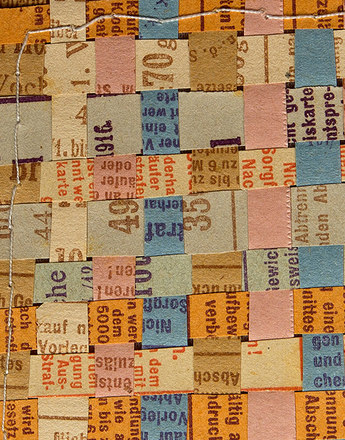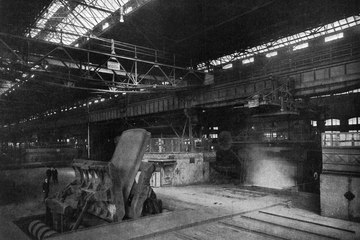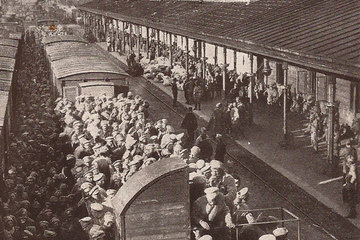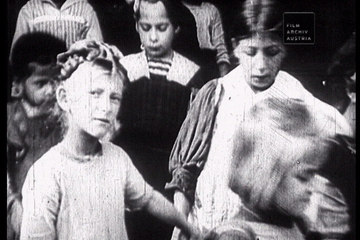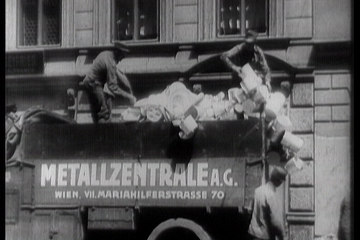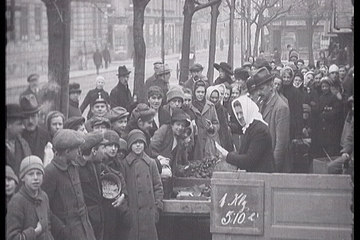Shortages and poverty
When the population reacted to shortages of bread and flour in January 1915with panic buying, the Kriegs-Getreide-Vekehrsanstalt [Wartime Grain Trade Department] introduced ration cards. Individual quotas were determined and handed out on presentation of bread and flour ration cards. But even the allocated rations became more and more difficult to supply, and the cards became worthless.
On the home front, the consequences of the supply shortage were one of the most characteristic experiences of the war. Foraging trips to the countryside, all-night queues, repeated reductions in rations, clashes between buyers and sellers, and a flourishing black market were the order of the day. In the last years of the war, public tolerance reached its limits and large sections of society were no longer willing to put up with this war.

